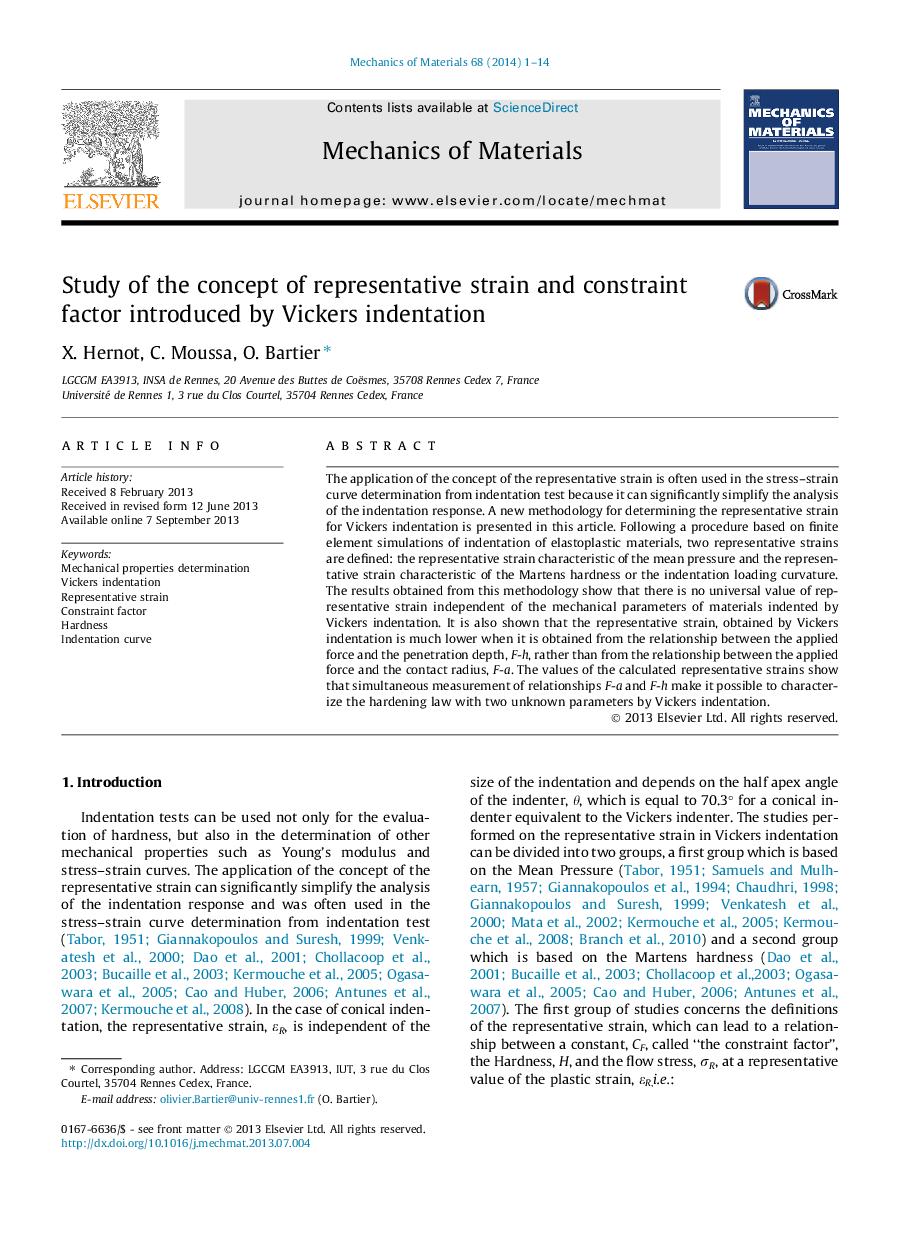| Article ID | Journal | Published Year | Pages | File Type |
|---|---|---|---|---|
| 802803 | Mechanics of Materials | 2014 | 14 Pages |
•The representative strain, εR, for Vickers indentation is numerically studied.•A new methodology for determining εR is proposed.•There is no universal representative strain in Vickers indentation.•The mean pressure-based representative strain is in the range from 0.08 to 0.25.•The Martens hardness-based representative strain lies between 0.025 and 0.095.
The application of the concept of the representative strain is often used in the stress–strain curve determination from indentation test because it can significantly simplify the analysis of the indentation response. A new methodology for determining the representative strain for Vickers indentation is presented in this article. Following a procedure based on finite element simulations of indentation of elastoplastic materials, two representative strains are defined: the representative strain characteristic of the mean pressure and the representative strain characteristic of the Martens hardness or the indentation loading curvature. The results obtained from this methodology show that there is no universal value of representative strain independent of the mechanical parameters of materials indented by Vickers indentation. It is also shown that the representative strain, obtained by Vickers indentation is much lower when it is obtained from the relationship between the applied force and the penetration depth, F-h, rather than from the relationship between the applied force and the contact radius, F-a. The values of the calculated representative strains show that simultaneous measurement of relationships F-a and F-h make it possible to characterize the hardening law with two unknown parameters by Vickers indentation.
